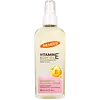What's inside
What's inside
 Key Ingredients
Key Ingredients

 Benefits
Benefits

 Concerns
Concerns

 Ingredients Side-by-side
Ingredients Side-by-side

Helianthus Annuus Seed Oil
EmollientGlycine Soja Oil
EmollientIsopropyl Palmitate
EmollientC12-15 Alkyl Benzoate
AntimicrobialTocopherol
AntioxidantTocopheryl Acetate
AntioxidantAscorbyl Palmitate
AntioxidantTheobroma Cacao Seed Butter
EmollientPersea Gratissima Oil
Skin ConditioningPrunus Armeniaca Kernel Oil
MaskingCocos Nucifera Oil
MaskingArgania Spinosa Kernel Oil
EmollientCarthamus Tinctorius Seed Oil
MaskingMacadamia Ternifolia Seed Oil
EmollientPrunus Amygdalus Dulcis Oil
Skin ConditioningSimmondsia Chinensis Seed Oil
EmollientHelianthus Annuus Seed Oil, Glycine Soja Oil, Isopropyl Palmitate, C12-15 Alkyl Benzoate, Tocopherol, Tocopheryl Acetate, Ascorbyl Palmitate, Theobroma Cacao Seed Butter, Persea Gratissima Oil, Prunus Armeniaca Kernel Oil, Cocos Nucifera Oil, Argania Spinosa Kernel Oil, Carthamus Tinctorius Seed Oil, Macadamia Ternifolia Seed Oil, Prunus Amygdalus Dulcis Oil, Simmondsia Chinensis Seed Oil
Water
Skin ConditioningGlycerin
HumectantButyrospermum Parkii Butter
Skin ConditioningCetearyl Alcohol
EmollientGlyceryl Stearate
EmollientHydrogenated Vegetable Oil
EmollientDi-PPG-3 Myristyl Ether Adipate
EmollientGlycine Soja Oil
EmollientDimethicone
EmollientPEG-100 Stearate
Tocopherol
AntioxidantTocopheryl Acetate
AntioxidantVitis Vinifera Seed Oil
EmollientHelianthus Annuus Seed Oil
EmollientSclerocarya Birrea Seed Oil
HumectantAvena Sativa Meal Extract
SoothingIsopropyl Myristate
EmollientSodium Polyacrylate
AbsorbentEthylhexylglycerin
Skin ConditioningTetrasodium EDTA
Sodium Metabisulfite
AntioxidantParfum
MaskingPhenoxyethanol
PreservativeSodium Sulfite
PreservativeBenzyl Benzoate
AntimicrobialBenzyl Salicylate
PerfumingHexyl Cinnamal
PerfumingButylphenyl Methylpropional
PerfumingBenzyl Alcohol
PerfumingWater, Glycerin, Butyrospermum Parkii Butter, Cetearyl Alcohol, Glyceryl Stearate, Hydrogenated Vegetable Oil, Di-PPG-3 Myristyl Ether Adipate, Glycine Soja Oil, Dimethicone, PEG-100 Stearate, Tocopherol, Tocopheryl Acetate, Vitis Vinifera Seed Oil, Helianthus Annuus Seed Oil, Sclerocarya Birrea Seed Oil, Avena Sativa Meal Extract, Isopropyl Myristate, Sodium Polyacrylate, Ethylhexylglycerin, Tetrasodium EDTA, Sodium Metabisulfite, Parfum, Phenoxyethanol, Sodium Sulfite, Benzyl Benzoate, Benzyl Salicylate, Hexyl Cinnamal, Butylphenyl Methylpropional, Benzyl Alcohol
Ingredients Explained
These ingredients are found in both products.
Ingredients higher up in an ingredient list are typically present in a larger amount.
Glycine Soja Oil comes from the soybean. Glycine Soja is native to eastern Asia.
Soybean oil is an emollient. It is rich in antioxidants and fatty acids including palmitic, stearic, oleic, and linoleic acids.
As an emollient, the fatty acids in soybean oil helps keep your skin soft and hydrated. It does so by creating a film on top that traps moisture in.
Soybean oil is also rich in vitamin E, a potent antioxidant. Vitamin E is also anti-inflammatory and provides a soothing effect.
Studies show soy may help fade hyperpigmentation from UVB. It does so by disrupting the melanin process from UVB induced skin inflammation.
This ingredient may not be malassezia folliculitis, or fungal-acne, safe.
Soybeans are rich in proteins and are part of the legume family. Foods made with soybeans include tofu, soymilk, edamame, miso, and soy sauce.
Learn more about Glycine Soja OilHelianthus Annuus Seed Oil is the oil derived from the seeds of a Sunflower. Sunflower seed oil is non-fragrant. It is an emollient, meaning it helps to soften the skin.
Sunflower seed oil contains many fatty acids. The fatty acids found in sunflower seeds include (from highest amount to least): linoleic acid, myristic acid, palmitic acid, stearic acid, arachidic acid, oleic acid, and linolenic acid.
These fatty acids help the skin create ceramides. Ceramides play a role in repairing the skin barrier.
Helianthus Annuus Seed Oil helps moisturize the skin. This in turn helps the skin look more rejuvenated and smoother.
Sunflowers are rich in vitamin E.
Historians believe Indigenous cultures of North America domesticated sunflowers before corn. Thus they relied on sunflower oil for a variety of uses. One such use is moisturizing skin and hair.
Sunflower seed oil may not be fungal acne safe. We recommend speaking with a professional if you have any concerns.
Learn more about Helianthus Annuus Seed OilTocopherol (also known as Vitamin E) is a common antioxidant used to help protect the skin from free-radicals and strengthen the skin barrier. It's also fat soluble - this means our skin is great at absorbing it.
Vitamin E also helps keep your natural skin lipids healthy. Your lipid skin barrier naturally consists of lipids, ceramides, and fatty acids. Vitamin E offers extra protection for your skin’s lipid barrier, keeping your skin healthy and nourished.
Another benefit is a bit of UV protection. Vitamin E helps reduce the damage caused by UVB rays. (It should not replace your sunscreen). Combining it with Vitamin C can decrease sunburned cells and hyperpigmentation after UV exposure.
You might have noticed Vitamin E + C often paired together. This is because it is great at stabilizing Vitamin C. Using the two together helps increase the effectiveness of both ingredients.
There are often claims that Vitamin E can reduce/prevent scarring, but these claims haven't been confirmed by scientific research.
Learn more about TocopherolTocopheryl Acetate is AKA Vitamin E. It is an antioxidant and protects your skin from free radicals. Free radicals damage the skin by breaking down collagen.
One study found using Tocopheryl Acetate with Vitamin C decreased the number of sunburned cells.
Tocopheryl Acetate is commonly found in both skincare and dietary supplements.
Learn more about Tocopheryl Acetate